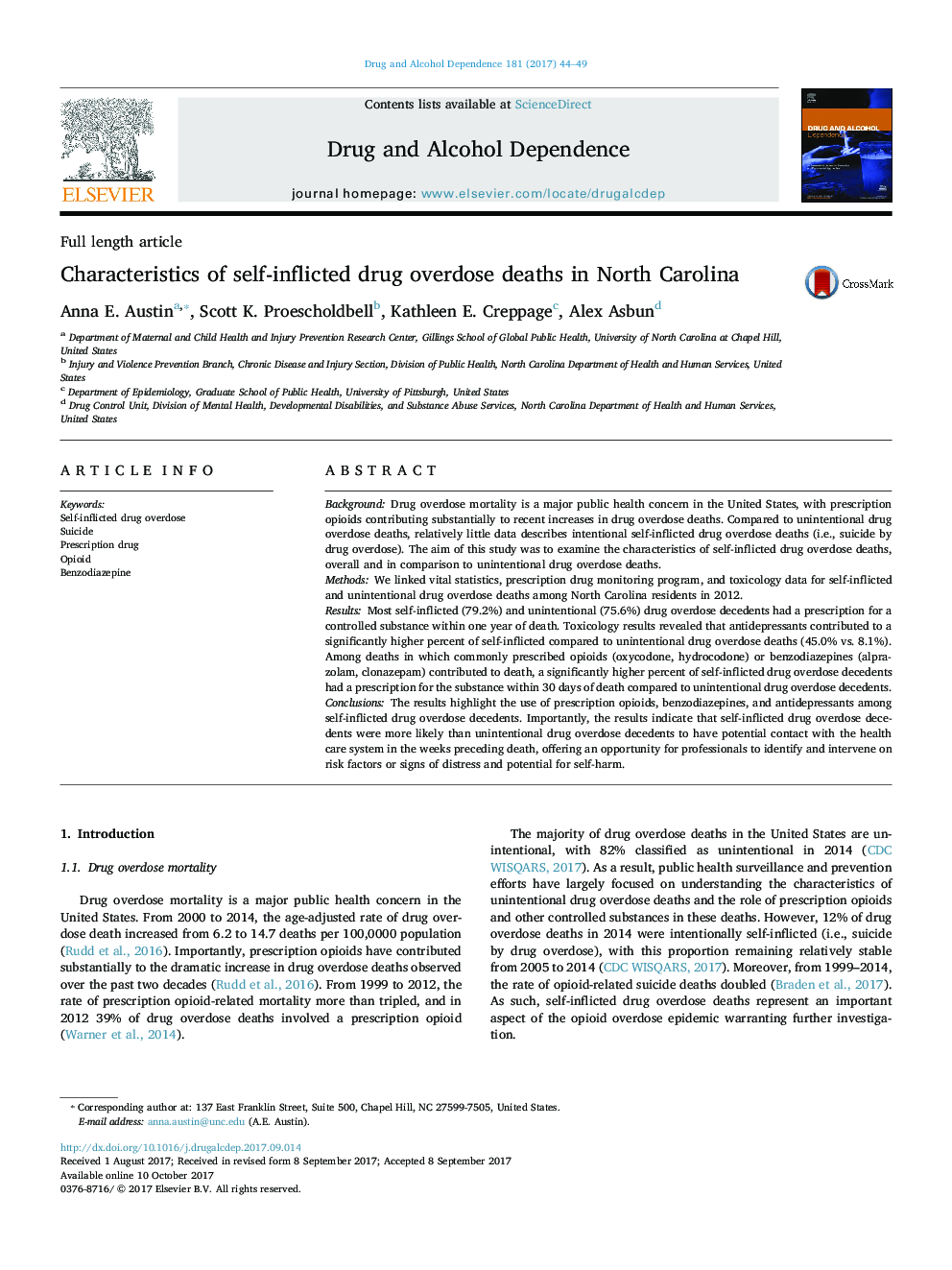| کد مقاله | کد نشریه | سال انتشار | مقاله انگلیسی | نسخه تمام متن |
|---|---|---|---|---|
| 5119903 | 1486110 | 2017 | 6 صفحه PDF | دانلود رایگان |
- Self-inflicted drug overdose deaths are an important public health issue.
- Linking multiple data sources provides important insights for prevention.
- Self-inflicted drug overdose deaths differ from unintentional drug overdose deaths.
- Addressing shared risk factors for mental distress and substance use is vital.
BackgroundDrug overdose mortality is a major public health concern in the United States, with prescription opioids contributing substantially to recent increases in drug overdose deaths. Compared to unintentional drug overdose deaths, relatively little data describes intentional self-inflicted drug overdose deaths (i.e., suicide by drug overdose). The aim of this study was to examine the characteristics of self-inflicted drug overdose deaths, overall and in comparison to unintentional drug overdose deaths.MethodsWe linked vital statistics, prescription drug monitoring program, and toxicology data for self-inflicted and unintentional drug overdose deaths among North Carolina residents in 2012.ResultsMost self-inflicted (79.2%) and unintentional (75.6%) drug overdose decedents had a prescription for a controlled substance within one year of death. Toxicology results revealed that antidepressants contributed to a significantly higher percent of self-inflicted compared to unintentional drug overdose deaths (45.0% vs. 8.1%). Among deaths in which commonly prescribed opioids (oxycodone, hydrocodone) or benzodiazepines (alprazolam, clonazepam) contributed to death, a significantly higher percent of self-inflicted drug overdose decedents had a prescription for the substance within 30Â days of death compared to unintentional drug overdose decedents.ConclusionsThe results highlight the use of prescription opioids, benzodiazepines, and antidepressants among self-inflicted drug overdose decedents. Importantly, the results indicate that self-inflicted drug overdose decedents were more likely than unintentional drug overdose decedents to have potential contact with the health care system in the weeks preceding death, offering an opportunity for professionals to identify and intervene on risk factors or signs of distress and potential for self-harm.
Journal: Drug and Alcohol Dependence - Volume 181, 1 December 2017, Pages 44-49
